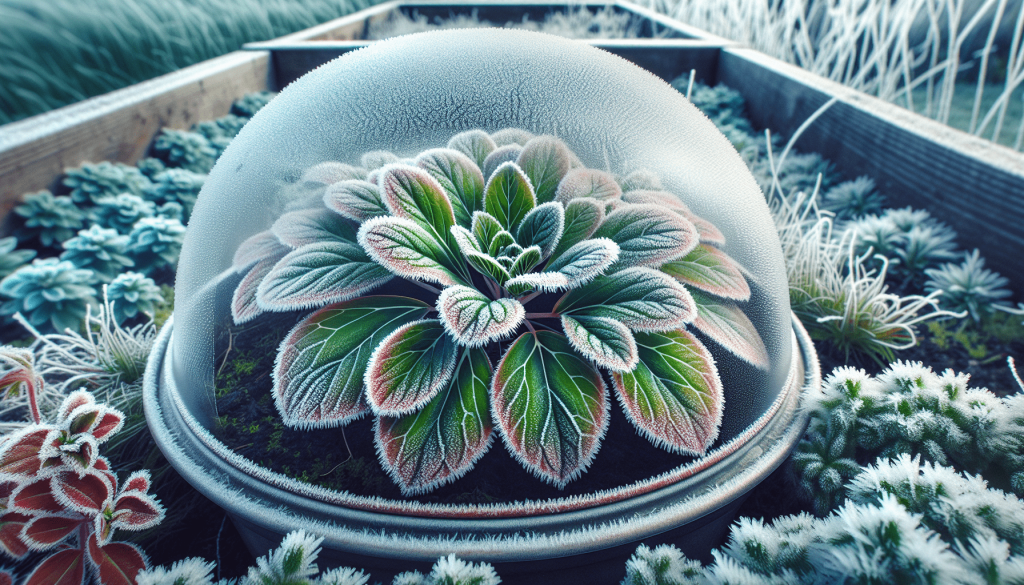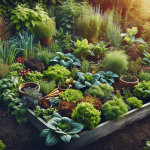This post may contain affiliate links. As an Amazon Associate, we may earn commissions from qualifying purchases.
Have you ever wondered how to safeguard your young plants from the unexpected bite of frost? Imagine you’ve nurtured those tender seedlings from mere seeds, only for frost to come along and zap them into oblivion. It’s a gardener’s worst nightmare. But don’t fret! There are numerous ways to shield your little green friends and ensure they thrive, no matter how chilly the nights become. Let’s explore some of the best methods to protect young plants from frost in a detailed and friendly manner.
Understanding Frost and Its Effects
Before we talk about ways to shield your plants, let’s briefly understand what frost is and its impact on plants. Frost occurs when the temperature drops low enough for water vapor in the air to freeze into ice crystals. For plants, especially young ones, this can be devastating. Frost can rupture cell walls, leading to withering and, ultimately, plant death.
Types and Temperatures
Different types of frost can affect your plants, and knowing which one you’re facing can help you choose the best protective measures.
| Frost Type | Temperature Conditions | Description |
|---|---|---|
| Light Frost | 32°F to 28°F (0°C to -2°C) | Slight rime on the ground, minor damage to sensitive plants. |
| Moderate Frost | 28°F to 25°F (-2°C to -4°C) | Ground and foliage covered, damages many types of plants. |
| Severe Frost | Below 25°F (-4°C) | Full coverage of ice, causing severe damage or death to plants. |
Knowing these types will arm you better when choosing protective strategies.
Methods of Frost Protection
Here’s where we get to the crux of the matter. There are many effective ways to keep your plants safe from frost, and combining several methods will give you the best results. Let’s break down each one.
Covering
One of the simplest and most effective methods to protect plants from frost is to cover them. You can use various materials, and each has its advantages.
Types of Covers
| Material | Pros | Cons |
|---|---|---|
| Bed Sheets | Readily available, reusable | Limited insulation |
| Burlap | Breathable, provides moderate protection | Can absorb moisture |
| Frost Blankets | High insulation, specifically designed | Can be costly |
| Plastic Sheeting | Wind resistant, waterproof | Can overheat plants if not removed |
When covering your plants, ensure the material doesn’t touch the foliage directly, as this can lead to damage. Use stakes or frames to create some space between the plant and the cover.
Watering
Watering your plants before a frost might seem counterintuitive, but it works. Moist soil retains heat better than dry soil, releasing warmth throughout the night. This can create a micro-climate around your plant that stays a few degrees warmer than the air.
Mulching
Mulch acts like a cozy blanket for your plant’s root systems. Materials like straw, shredded leaves, and grass clippings insulate the ground and retain moisture, providing a protective barrier.
Applying Mulch
- Material Selection: Choose organic materials like straw, leaves, or wood chips.
- Layer Thickness: Aim for a 2-4 inch thick layer around the base of the plant.
- Distance from Stem: Ensure the mulch isn’t piled up directly against the plant stem to prevent rot.
Using Cloches and Domes
For individual plants, cloches and domes offer focused protection. These mini-greenhouses trap heat around the plant, safeguarding it from frost.
Types of Cloches
| Cloche Type | Material | Benefits |
|---|---|---|
| Bell Cloche | Glass or plastic | Good insulation, reusable |
| Plastic Bottle | Repurposed bottles | Affordable, customizable |
| Row Cover Cloche | Fabric or plastic sheeting | Covers multiple plants, easy setup |
Bringing Potted Plants Indoors
If you have young plants in pots, bringing them indoors during frosty nights is a no-brainer. Place them in a garage, greenhouse, or inside your home to keep them warm.

Technological Aids
Thanks to advancements in gardening technology, several gadgets can help you keep an eye on the temperature and take preemptive measures.
Frost Sensors and Alarms
There are various frost sensors available that notify you when temperatures get dangerously low. Some even sync with your smartphone, providing real-time alerts.
Heating Mats and Cables
Providing bottom warmth can be a game-changer for young plants. Heat mats and cables laid under the soil can raise the ground temperature enough to ward off frost damage.
Garden Heaters
For larger areas, garden heaters or electric blankets can cover significant spaces and maintain a nice, cozy temperature for your plants. Just remember to follow safety instructions to avoid any mishaps.
Creating a Microclimate
Sometimes, you need to think bigger and create a microclimate in your garden. This means altering the environment in your garden to be more plant-friendly and less frost-prone.
Windbreaks
Setting up barriers like fences, walls, or even dense hedges can block frost-forming winds, helping to maintain a warmer microclimate for your garden.
Companion Planting
Planting hardier, taller plants around your young plants can act as a barrier and provide some warmth. For example, tall grasses or shrubs around vegetable beds can shield them from wind and frost.

Preparing for Frost in Advance
The best defense is a good offense, as they say. Preparing in advance for frost can save you from the last-minute scramble.
Checking Weather Forecasts
Keep an eye on the weather forecast, especially during the changing seasons. This allows you to take timely protective measures rather than reacting last-minute.
Harden Off Young Plants
Gradually acclimating your young plants to the outdoor conditions before planting them in the ground can make them more resilient. Start by placing them outside for a few hours each day and gradually increase the time over a week or two.
Plant Selection
Finally, choosing frost-resistant plants can save you a lot of trouble. Some plants are naturally more resilient to cold weather, and including these in your garden can provide a more robust setup.
Frost-Resistant Plants
| Plant Type | Example Species | Benefits |
|---|---|---|
| Perennials | Yarrow, Lavender | Regrow each year, tolerate frost |
| Woody Shurbs | Rose, Holly | Strong structure, frost tolerant |
| Cool-Season Veg | Broccoli, Kale | Thrive in cooler temperatures |
Mistakes to Avoid
It’s easy to make mistakes in the quest to protect your plants. Here are some common pitfalls and how to avoid them.
Using Heavy Plastic Covers
Heavy plastic can crush young plants and cause more harm than good. Lightweight, breathable materials are generally better.
Forgetting to Remove Covers
Leaving covers on during the day can trap too much heat, leading to plant stress or even cooking them in extreme cases. Remove covers first thing in the morning.
Overusing Water
While watering can help, overwatering can lead to soggy soil that’s less effective at retaining heat and can cause root rot.
Ignoring Weather Warnings
Sometimes, frost can appear unexpectedly. Ignoring weather alerts can lead to last-minute frenzy and mistakes. Being proactive is key.
The Importance of Observation
Always keep an eye on your plants. Regular checks can help you notice signs of frost damage early and take corrective measures.
Signs of Frost Damage
| Symptom | What It Means |
|---|---|
| Blackened leaf edges | Early frost damage, cells ruptured |
| Wilting | Plants losing turgor due to cell damage |
| Soft Stems | Severe frost damage has occurred |
By catching these early, you can often save a plant from a complete death.
Love Your Plants
Gardening is as much an art as it is science. Your care and attention can make a world of difference to your plants. Each little leaf and bud rely on you to safeguard it from the harsh realities of nature, making your role hugely significant in their life cycle. Every method you apply, every measure you take, reflects your dedication and love for your garden.
Bringing It All Together
You have so many tools and techniques at your disposal to protect your young plants from frost. Whether it’s covering them with the right materials, using tech gadgets, or creating a microclimate, each method has its unique benefits.
Remember, the best approach often involves combining several of these methods to offer robust protection. Go ahead, give your plants the cozy, frost-free environment they deserve. And before you know it, you’ll be reaping the rewards of your tender love and care with a flourishing garden, untouched by frost.
So, go on and safeguard those little green gems as if they were your own children. Because, in many ways, they are.








